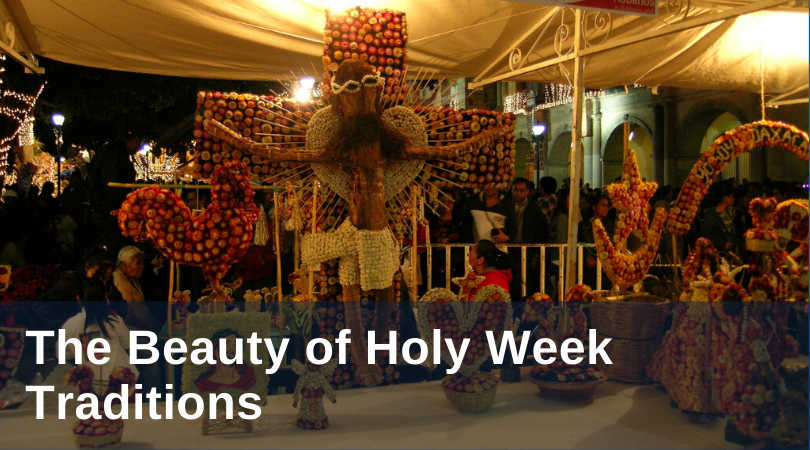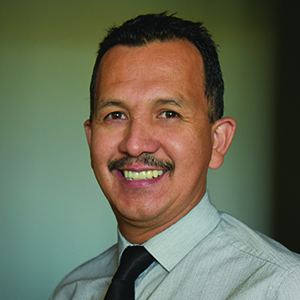
Editorial Note: This post is part of a series highlighting Lenten traditions in the Hispanic Catholic Church. Read part one here.
Once the forty days of the spiritual exercises are complete, Holy Week or Major Week, as it is known in Mexico, begins. The traditions of my town for this week include the following:
- A great procession for Palm Sunday from the entrance and all around the town through the main streets to the parish. During this celebration someone dresses up like Our Lord Jesus Christ, mounts a donkey, and the whole town makes way for him with their cloaks and with palm tree branches in their hands, simulating the triumphal entrance of Jesus into Jerusalem. The procession ends with the celebration of Palm Sunday’s Holy Mass.
- During this time, the Church wants to emphasize the great mercy of our God, so for this there are confessions and the celebration of Holy Mass from Monday to Thursday in the evenings. This is just another way to walk with Jesus and Mary and in this way prepare our minds and hearts for what is coming later this week.
- On Holy Thursday there is the representation of the Last Supper and the Washing of the Feet presided over by the parish priest, while the disciples are represented by some of the young men that participated in the Lenten spiritual exercises. This celebration ends with Holy Mass and with Adoration of the Blessed Sacrament, in remembrance of the solemn institution of priesthood and of the Eucharist. Eucharistic Adoration takes place right after the end of Mass and it lasts until midnight. At midnight, the priest takes the Blessed Sacrament into a private chapel, leaving the tabernacle empty and symbolizing the emptiness we feel in our hearts when we are missing the presence of God in our lives.
- Holy or Good Friday is lived in a very special way, since we are not allowed to listen to music, watch TV, or go out to play. Most people fast this day and the only ones that are not asked to fast are children younger than 12 years of age, elderly people older than 60 years of age, and those who have health issues. There is a very deep silence throughout this day and a great respect in preparation for noon, when the representation of the Passion of Christ takes place. The Passion is dramatized by most of the people who participated in the spiritual exercises. This celebration initiates in the temple’s plaza, and from there we make the Way of the Cross through all the streets of the town, all the way to one of the hills of the mountains that surround the town. There we re-enact the crucifixion and the burial of Our Lord Jesus Christ. After the Passion of Christ is depicted, and his body is placed in the tomb, there is a procession in complete silence through the town’s streets. This procession is done all the way back to the temple’s plaza and from there each family goes to their respective homes in a profound silence and they keep praying, meditating, and fasting until Holy Saturday night, when we celebrate the Easter Vigil of the Glory of the Lord.
Like what you read? Submit your email below to have our newest blogs delivered directly to your inbox each week.
Featured image: Kim F via flickr; CC-BY-NC-2.0.


